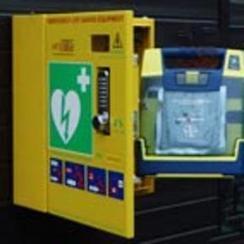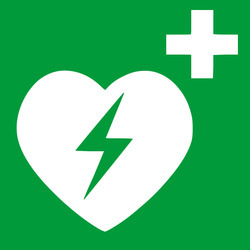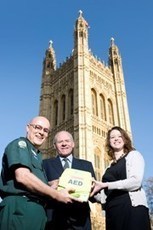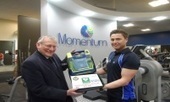See on Scoop.it – Defibrillation
Implantable cardioverter defibrillator (ICD)
An ICD (or implantable cardioverter defibrillator) is a small device which can be used to treat people with dangerously abnormal heart rhythms.
Abnormal heart rhythms (or arrhythmias) can cause your heart to beat too quickly, too slowly or in an irregular pattern. These heart rhythms can happen suddenly and unexpectedly and sometimes people die as a result.
The ICD is inserted just under your collar bone. It looks similar to a pacemaker and is a little bigger than a matchbox. It is made up of:
a pulse generator – a battery powered electronic circuitone or more electrode leads which are placed into your heart through a vein
An ICD can give your heart electric pulses or shocks to get your heart rhythm back to normal.
How does an ICD work?
Your ICD constantly monitors your heart rhythm through the electrodes and if it notices a dangerous heart rhythm it can deliver three treatments:
Pacing – a series of low-voltage electrical impulses at a fast rate to correct the heart rhythmCardioversion – one or more small electric shocks to try and restore the heart to a normal rhythmDefibrillation – one or more larger electric shocks to try and restore the heart to a normal rhythm
Who needs an ICD?
ICDs are used for some of the people who:
have already had a life threatening abnormal heart rhythm and are at risk of having it again
haven’t had a life threatening heart rhythm, but who have had tests that show they are at risk of one in the future. This is usually because they have inherited certain faulty genes and may have a condition such as Cardiomyopathy, Long QT syndrome or Brugada Syndromehave another type of heart condition, such as heart failure, and who have had, or at risk of having a life-threatening abnormal heart rhythm have had other treatments to correct their heart rhythm which have been unsuccessful.
How is an ICD fitted?
ICDs are inserted under local anaesthetic, but with sedation, so you will feel very sleepy. It can take as little as one hour to insert the ICD, although the time it takes will depend on the type of device you’re having. You will usually stay overnight in hospital and your ICD will be checked thoroughly before you leave.
Who can I talk to?
It’s natural to feel worried about having an ICD fitted, but it often helps to talk about your feelings with someone close to you or with a healthcare professional.
See on www.bhf.org.uk

 Follow
Follow





